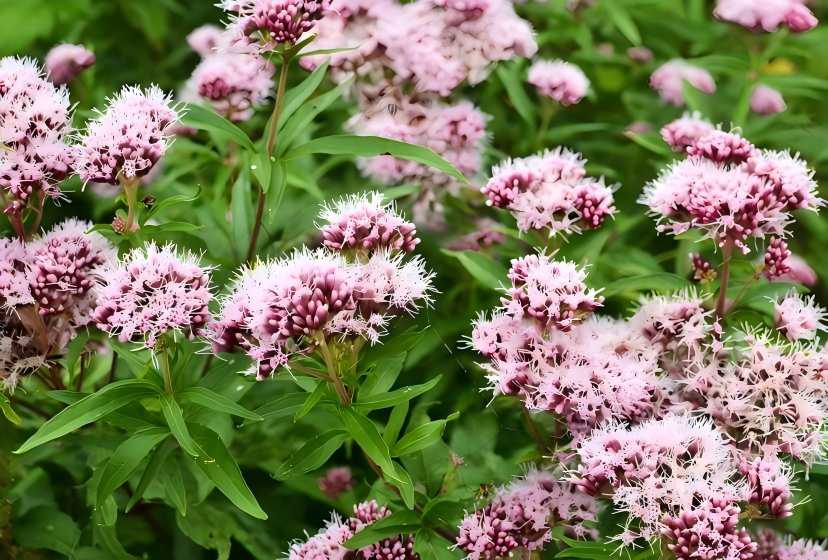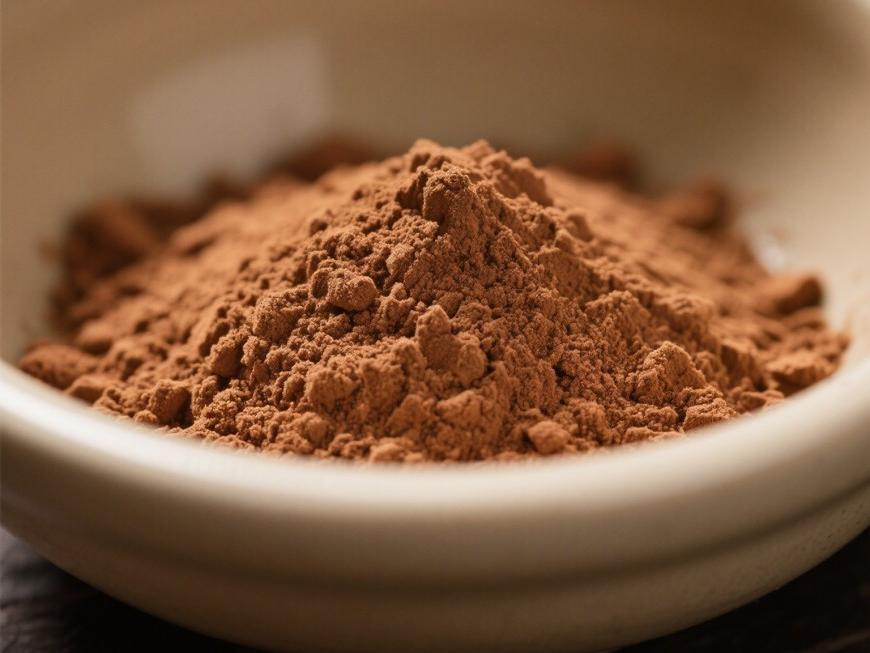A New Ingredient Choice for Emotional Well-being and Natural Sleep Support: Valerian Extract
Valerian (Valeriana L.), a key medicinal plant in the Valerianaceae family, boasts a long history of use and broad international recognition. As early as 1983, valerian was included in the European Pharmacopoeia as a soothing ingredient. Its extracts and preparations are now available in over 20 countries worldwide, establishing it as a highly favored natural health ingredient.
Valerian is rich in diverse bioactive compounds including monoterpenes, sesquiterpenes, and lignans. These components synergistically confer exceptional mood-soothing and sleep-supporting properties. Modern research indicates that valerian extracts help alleviate daily stress, promote physical and mental relaxation, and improve sleep quality, providing scientific grounds for contemporary health product development.
Green Spring Technology leverages mature extraction processes and internationally standardized quality control to provide customers with high-purity, high-potency valerian extract ingredients. We empower brands to create safe, effective, and clearly labeled mood and sleep health products, jointly advancing the innovative application of natural botanical ingredients in the health sector.
1 Valerian Extract: A Natural Solution for Emotional Wellness and Sleep Support Products with Multiple Active Components
Valerian extract is rich in diverse natural active compounds, with approximately 150 identified and isolated compounds to date. These components exert synergistic effects through multiple targets, collectively conferring exceptional mood-soothing and sleep-supporting properties, making it an ideal natural raw material for developing related health products.
Core Active Components and Efficacy Support:
· Cycloartenolides: As key bioactive constituents of valerian extract, particularly valerenic acid and related compounds, they promote relaxation and sedation while improving sleep quality, serving as primary active substances.
· Volatile Oil Components: Volatile constituents like valerenic acid and valerenone exhibit potent bioactivity, regulating mood through multiple pathways to enhance the product's soothing effects.
· Flavonoids and Lignans: These components possess strong antioxidant properties, aiding in the alleviation of oxidative stress while supporting emotional balance and overall health.

Product Application Advantages:
· Multi-component synergy delivers comprehensive and stable effects
· Derived from natural botanicals, gentle and safe for long-term use
· Compatible with diverse formulations for convenient application
Application Areas:
· Emotional Wellness: Stress-relief tablets, mood-balancing gummies, relaxation teas
· Sleep Support: Sleep-aid capsules, bedtime beverages, sleep sprays
· Daily Wellness: Antioxidant formulas, comprehensive health supplements
Valerian extract, with its multi-component synergistic properties, provides scientific rationale and raw material assurance for developing natural products targeting emotional support and sleep health, helping brands create differentiated, high-performance wellness solutions.
2 Valerian Extract: Infusing New Momentum into Emotional Balance and Sleep Support Products with Natural Active Ingredients
In the modern health product landscape, valerian extract is emerging as a key natural ingredient in emotional management and sleep optimization formulations. Its unique bioactive components provide a scientific foundation for product innovation, helping brands address growing market demand.
Efficacy Features & Research Support: Valerian extract demonstrates multifaceted health support potential through the synergistic action of multiple natural compounds:
· Helps alleviate tension from daily stress and promotes emotional stability
· Supports normal sleep-wake cycles and improves sleep quality
· Helps maintain healthy physical and mental states, enhancing quality of life
Application Innovation and Product Development: This ingredient offers multiple possibilities for product innovation:
· Suitable for fast-acting relaxation products addressing immediate needs
· Ideal for developing long-term maintenance formulas providing sustained support
· Easily blends with other natural ingredients to create personalized product solutions
Safety and Market Adaptability: Valerian extract boasts a strong safety profile, suitable for diverse age groups. Its natural origin aligns strongly with modern consumers' pursuit of “clean label” products, offering brands significant competitive advantage.
As the health consumption market continues to evolve, Valerian extract—with its unique advantages—is emerging as a key choice for developing emotional wellness and sleep support products, creating new opportunities for brands to build differentiated value.
3 Valerian Extract: Green Spring Technology Solves Emotional Wellness Product Development Challenges with Stable, High-Efficiency Natural Ingredients
In modern health product development, brands face numerous challenges such as unstable natural ingredients and difficulty standardizing efficacy. Leveraging advanced extraction processes and rigorous quality control systems, Green Spring Technology delivers high-quality valerian extract, providing reliable solutions for emotional wellness and sleep support products.
Core challenges addressed by Green Spring Technology's valerian extract:
· Ingredient Stability Challenges: Through standardized cultivation management and patented extraction technology, it ensures consistent levels of core active compounds like valerenic acid and valerenic acid esters across every batch, addressing the industry pain point of significant batch-to-batch variation in natural ingredients.
· Efficacy Consistency Challenges: Utilizing bioactivity-oriented extraction processes, it maximizes the retention of synergistic efficacy components such as sesquiterpenes and lignans, guaranteeing consistent and reliable product outcomes.
· Application Adaptability Requirements: We offer multiple dosage form options, perfectly suited for softgels, solid beverages, tablets, essential oils, and other product formats, meeting diverse product development needs.
· Safety and Compliance Requirements: Comprehensive quality monitoring throughout the entire process, providing complete testing reports and technical documentation, ensures products comply with relevant regulations, safeguarding brand product launches.
Future Outlook:
Green Spring Technology will continue deepening research and innovation in valerian extract, collaborating with industry partners to advance the scientific application of this natural ingredient in emotional wellness and sleep support products. Through ongoing technological breakthroughs and product optimization, we aim to deliver superior raw material solutions for brand clients, jointly meeting consumers' growing demand for natural, safe, and effective health products.
Contact us at helen@greenspringbio.com or WhatsApp: +86 13649243917 today to obtain valerian extract samples and comprehensive application solutions, and join us in developing the next generation of emotional wellness and sleep support products!
References
[1] Duan Xueyun, Fang Ying, Zhou Ying, et al. Comprehensive Research on Valerian Plants [J]. Chinese Journal of Pharmacy, 2008, 11 (7): 793.
[2] Xie Jiankun, Qu Huihua, Luan Xinhui. Overview of the chemical constituents and pharmacological studies of Valeriana plants [J]. Chinese Journal of Pharmacy, 2002, 37 (10): 729.
[3] Zhang Z X, Dou D Q, Liu K, et al. Studies on the chemical constituents of Valeriana fauriei Briq [J]. Journal of Asian Natural Products Research, 2006, 8 (5): 397.
[4] Huang Baokang, Zheng Hancen, Qin Luping, et al. Survey of domestic Valeriana medicinal plant resources [J]. Chinese Herbal Medicines, 2004, 27 (9): 632.
[5] Wang R, Xiao D, Bian Y H, et al. Minor iridoids from the roots of Valeriana wallichii [J]. J Nat Prod, 2008, 71 (7): 1254.
[6] Li Shaohua, Yan Zhiyong. Research progress on sphinganine and terpenoid components [J]. Chinese Journal of New Drugs, 2012, 21 (6): 633.
[7] Tiwari N, Yadav AK, Srivastava P, et al. Iridoid glycosides from Gmelina arborea [J]. Phytochemistry, 2008, 69(12): 2387.
[8] Ji TF, Wang AG, Yang JB, et al. A novel secoiridoid from Olea europaea L. [J]. Nat Prod Res Dev, 2007, 19(3): 361.
[9] Teng J, Zhang FG, Zhang YW, et al. A new iridoid glycoside from Veronica sibirica [J]. Chin Chem Lett, 2008, 19(4): 450.
[10] Lin S, Shen Y H, Li H L, et al. Acylated iridoids with cytotoxic activity from Valeriana jatamansi [J]. J Nat Prod, 2009, 72(4): 650.
-
Prev
Empower Emotional Wellness Product Solutions with Natural Valerian Extract Ingredients
-
Next
Green Spring Technology Valerian Volatile Oil: Solving the Issue of Batch Consistency in Natural Raw Materials


 English
English French
French Spanish
Spanish Russian
Russian Korean
Korean Japanese
Japanese




